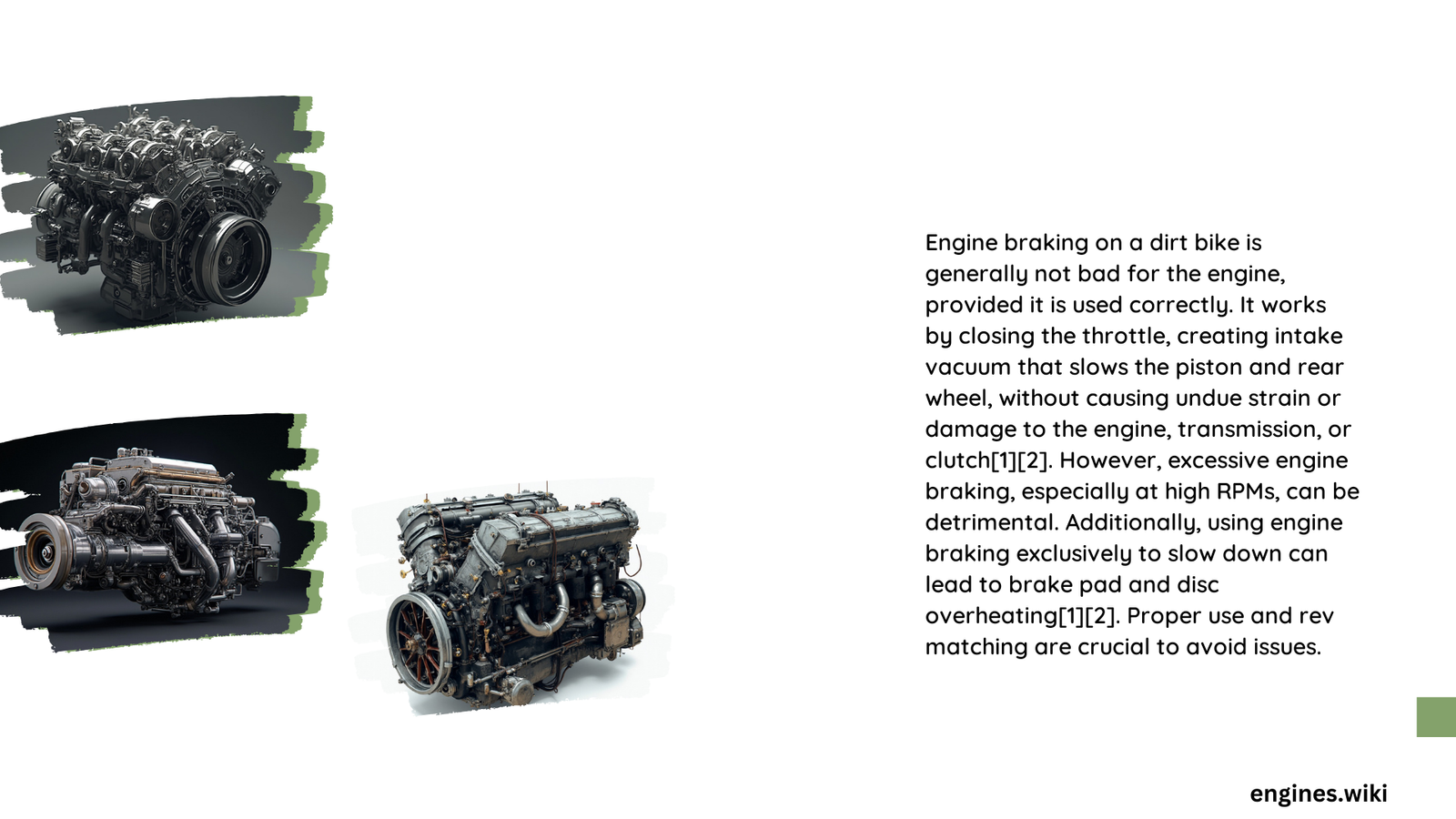Engine braking is a critical technique in dirt bike riding that involves using the motorcycle’s engine resistance to slow down without applying the brakes. Riders often wonder whether this method causes damage to their bike’s components or provides performance advantages. This comprehensive guide explores the nuanced relationship between engine braking and dirt bike performance, addressing common concerns and providing expert-level insights into its practical applications and potential impacts.
What Happens During Engine Braking?
Engine braking occurs when a rider releases the throttle while the motorcycle remains in gear, creating resistance through the engine’s internal mechanisms. This process generates a natural deceleration effect that can be strategically used in various riding scenarios.
Key Mechanisms of Engine Braking
| Mechanism | Description | Performance Impact |
|---|---|---|
| Throttle Closure | Stopping fuel supply | Immediate speed reduction |
| Gear Engagement | Transmission resistance | Enhanced deceleration control |
| RPM Interaction | Engine vacuum creation | Smooth speed management |
Can Engine Braking Damage Dirt Bike Components?

Transmission and Clutch Stress
Contrary to popular belief, engine braking does not inherently damage dirt bike components when performed correctly. Modern dirt bikes are engineered to withstand these forces:
- Clutch Design: Specifically built to handle dynamic load variations
- Transmission Durability: Engineered for repeated stress cycles
- Material Resilience: High-strength components minimize wear
Potential Risks and Mitigation
While engine braking is generally safe, riders should be aware of potential risks:
- Avoid aggressive downshifting
- Maintain smooth throttle control
- Use proper technique during deceleration
- Regular maintenance checks
How Does Engine Braking Affect Dirt Bike Performance?
Traction and Control Benefits
Engine braking provides significant advantages in off-road environments:
- Improved Corner Entry: Helps stabilize bike geometry
- Enhanced Rear Wheel Grip: Reduces unexpected sliding
- Precise Speed Management: Allows nuanced control in technical terrain
Performance Scenarios
| Terrain Type | Engine Braking Effectiveness | Recommended Technique |
|---|---|---|
| Soft Sand | Moderate | Gentle, minimal intervention |
| Hard Pack | High | More pronounced braking |
| Rocky Trails | Variable | Adaptive technique required |
When Should You Use Engine Braking?
Optimal Application Strategies
Riders should consider engine braking in these scenarios:
- Approaching tight corners
- Descending steep trails
- Navigating technical single-track sections
- Managing speed without brake overuse
Expert Recommendations
Best Practices for Safe Engine Braking
- Practice smooth throttle control
- Match gear to terrain complexity
- Listen to your bike’s response
- Develop intuitive technique through consistent practice
Conclusion
Engine braking is not inherently bad for dirt bikes when executed correctly. It represents a sophisticated technique that, when mastered, can significantly enhance rider control and bike performance.
